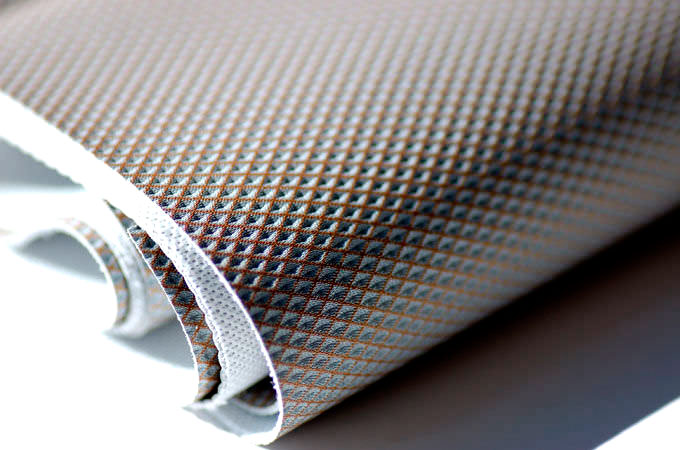The Uses of Rubber
Compared to vulcanized rubber (a process by which the rubber is heated and sulfur, peroxide or bisphenol are added to improve resistance and elasticity, and to prevent it from perishing), uncured rubber has relatively few uses. It is used for cements; for adhesive, insulating, and friction tapes; and for crepe rubber used in insulating blankets and footwear. Vulcanized rubber, on the other hand, has numerous applications. Resistance to abrasion makes softer kinds of rubber valuable for the treads of vehicle tires and conveyor belts, and makes hard rubber valuable for pump housings and piping used in the handling of abrasive sludge.
The flexibility of rubber is often used in hoses, tires, and rollers for a wide variety of devices ranging from domestic clothes wringers to printing presses; its elasticity makes it suitable for various kinds of shock absorbers and for specialized machinery mountings designed to reduce vibration. Being relatively impermeable to gases, rubber is useful in the manufacture of articles such as air hoses, balloons, balls, and cushions. The resistance of rubber to water and to the action of most fluid chemicals has led to its use in rainwear, diving gear, and chemical and medicinal tubing, and as a lining for storage tanks, processing equipment, and railroad tank cars. Because of their electrical resistance, soft rubber goods are used as insulation and for protective gloves, shoes, and blankets; hard rubber is used for articles such as telephone housings, parts for radio sets, meters, and other electrical instruments. The coefficient of friction of rubber, which is high on dry surfaces and low on wet surfaces, leads to the use of rubber both for power-transmission belting and for water-lubricated bearings in deep-well pumps.
Contemporary manufacturing
Around 25 million tonnes of rubber is produced each year, of which 30 percent is natural rubber. The remainder is synthetic rubber derived from petrochemical sources. The top end of latex production results in latex products such as surgeons’ gloves, balloons and other relatively high-value products. The mid-range which comes from the technically specified natural rubber materials ends up largely in tires but also in conveyor belts, marine products, windshield wipers and miscellaneous rubber goods. Natural rubber offers good elasticity, while synthetic materials tend to offer better resistance to environmental factors such as oils, temperature, chemicals or ultraviolet light and suchlike. “Cured rubber” is rubber which has been compounded and subjected to the vulcanisation process which creates cross-links within the rubber matrix.
Prehistoric uses

The first use of rubber is thought to have been by the Olmecs, who centuries later passed on the knowledge of na樂威壯
tural latex from the Hevea tree in 1600 BCE to the ancient Mayans. They boiled the harvested latex to make a ball for a Mesoamerican ballgame.
Pre-World War II manufacturing

Other significant uses of rubber are door and window profiles, hoses, belts, gaskets, matting, flooring, and dampeners (antivibration mounts) for the automotive industry. The use of rubber in car tires (solid in the early days rather than pneumatic) in particular consumed a significant amount of rubber. Gloves (medical, household and industrial) and toy balloons are also large consumers of rubber, although the type of rubber used is concentrated latex. Significant tonnage of rubber is used as adhesives in many manufacturing industries and products, although the two most noticeable are the paper and the carpet industries. Rubber is also commonly used to make rubber bands and pencil erasers.
Pre-World War II textile applications

Rubber produced as a fiber, sometimes called ‘elastic’, has significant value for use in the textile industry because of its excellent elongation and recovery properties. For these purposes, manufactured rubber fiber is made as either an extruded round fiber or rectangular fibers that are cut into strips from extruded film. Because of its low dye acceptance, feel and appearance, the rubber fiber is either covered by yarn of another fiber or directly woven with other yarns into the fabric. In the early 1900s, for example, rubber yarns were used in foundation garments. While rubber is still used in textile manufacturing, its low tenacity limits its use in lightweight garments because latex lacks resistance to oxidizing agents and is damaged by aging, sunlight, oil, and perspiration. Seeking a way to address these shortcomings, the textile industry has turned to neoprene (polymer of chloroprene), a type of synthetic rubber, as well as another more commonly used elastomer fiber, spandex (also known as elastane), because of their superiority to rubber in both strength and durability.





